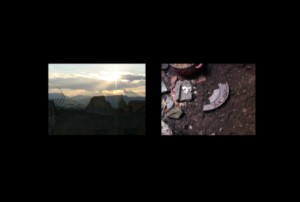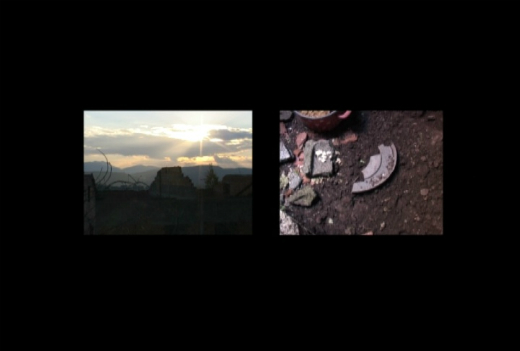
Screengrab from Journal No.1 – An Artist’s Impression
Beirut was the city’s latest art space that impressed us with its opening work “Global Slum” back in October. Beirut is located in a beautiful 1940s villa in Agouza and comes complete with its own garden and scenic rooftop, where screenings and receptions are held.
Now, the art space is launching a new essay exhibition titled What does a drawing want? that looks at drawing as an act, specifically how to draw politically. Beirut says the exhibition touches upon themes as wide as “art works, the space of law, politics, friendship, status and civility,” aiming to draw connections between them.
“The idea came from many places. One, was from a book by WJT Mitchell called ‘What do pictures want?’,” said Sarah Rifky, co-founder of Beirut.
“Another from an essential question, of drawing as one type of image, and what it seeks and why it might be politically relevant. The exhibition is not of drawing but through loose associations thinks about ‘drawing’ or its status, like the work by Carlos Amorales where he reprints the French Civil Code in graphite pencil; is the law a drawing?”, she said.
The exhibition takes place over the course of a month and proposes art works, talks, films, scripts and a concert, as things that inspire us to think about drawing as a gesture of free will and what binds that gesture to ourselves.
“It is one outcome or manifestation of a thought that has lingered for many months”, Rifky explained.
Drawing is the result of an inward process that the exhibition wishes to explore. “The inside is an operation of the outside,” said Beirut and it wants to “try its hand at exploring the logic behind drawing,” if we take drawing as having the ability to “explode meaning into nonsense, madness, anarchy.”
The programme will include some highlights such as artist talks and screenings; there is the screening of The Role of A Lifetime (2003) by Deimantas Narkevičius and Journal No.1 – An Artist’s Impression (2007) by Hito Steyerl on 9 January followed by a talk from Christian Rattameyer, associate curator at MoMA on the political dimension of drawing on 14 January.
Previous events that were held as part of the exhibition were the screening of Supprimer, Modifier, Preserver (2011) and a talk by Carlos Amorales as well as a music concert titled Music for Riots and Fights.
The exhibition will feature the works of Carlos Amorales, Gintaras Didžiapetris, Jimmie Durham, Gabriel Lester, Anetta Mona Chişa & Lucia Tkáčová, as well as films by Deimantas Narkevičius and Hito Steyerl, a text by Isabel Seligman and a print indent by Carlos Amorales.
“We want to approach an understanding or wonder how through making exhibitions (or this exhibition) one can be open to making unforeseen connections between things to understand something else,” said Rifky.
Be sure to check out the reading room on the second floor; it is a library containing all sorts of relevant books that are open and free to the public. Notably, the room sometimes holds the personal books of artists who have showcased their work at Beirut such as Maryam Jafri, who opened Beirut’s exhibition space, known as The Salon, with her Global Slum.
The programme has started on 12 December and will end on 20 January. All events, screenings and concerts are free to attend.



